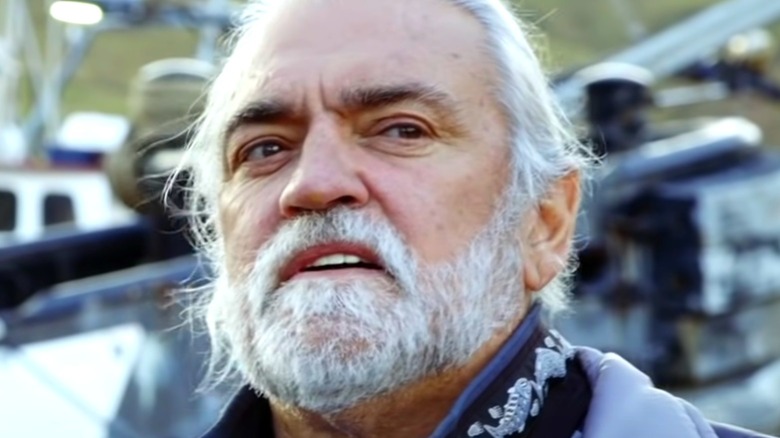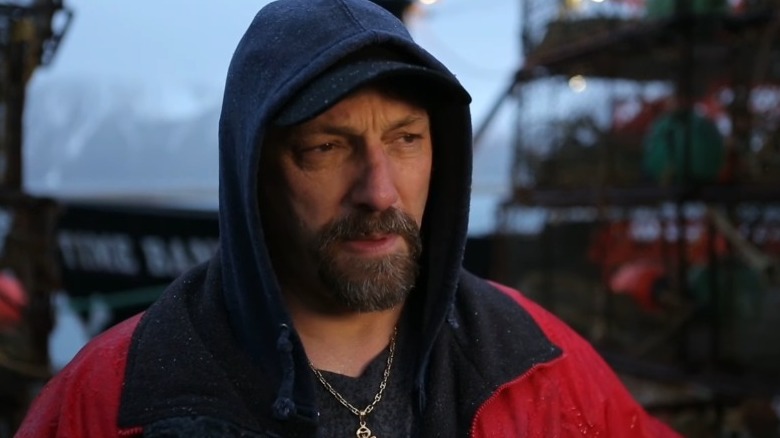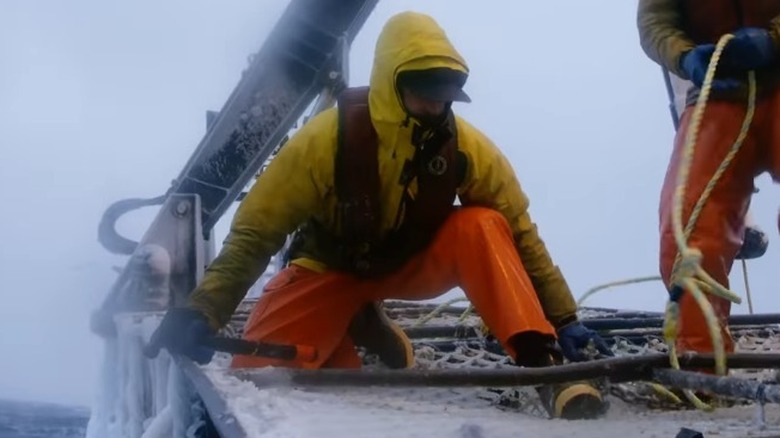Working On Deadliest Catch Is An Even Tougher Job Than You Think
The world of reality TV is full of many intriguing and noteworthy shows. However, few are as captivating as the Discovery Channel's "Deadliest Catch." The series is one of Discovery's longest-running, as it premiered more than 15 years ago, in 2005. What really hooks fans is the thrilling nature and inherent danger of the show's premise. "Deadliest Catch" focuses on people who work in the risky business of Alaskan crab fishing. While some cast members have received attention due to controversy outside of "Deadliest Catch," there's no denying that the show's unflinching documentation of the dangerous trek out to the Bering Sea creates excellent television.
For thrill-seekers wishing for an occupation that would amp up their adrenaline, working on "Deadliest Catch" seems like a golden opportunity. However, before attempting to join any of the crew featured on the reality series, it's essential to remember that the professions depicted on "Deadliest Catch" aren't easy to do. In fact, as a brief answer from Johnathan and Andy Hillstrand on a Reddit AMA noted, working on "Deadliest Catch" is an even tougher job than you think.
Johnathan Hillstrand believes nothing is easy about his job
Johnathan and Andy Hillstrand featured on multiple seasons of "Deadliest Catch," often sharing captain duties for the FV Time Bandit. Despite some disputes between the Hillstrands and Discovery, they were actually in line to get their own spin-off series, "Hillstranded." With so much time on the show, and experience leading a crew, it's little wonder that their insight into commercial crab fishing probably has some weight to it. It's at least enough to shoot down any ideas that their profession has an easy side. When a user on the Reddit AMA asked what they consider to be the toughest part of their job, Johnathan replied, "Everything about the job is hard."
When we dive more into what these crews have to do, it becomes clear why these jobs are not only dangerous but extremely difficult. To begin with, the "Deadliest Catch" crews have to deal with the harshest weather conditions out at sea. One of the reasons that commercial king crab fishing is initially so dangerous is because the fishing season occurs during autumn and winter, when the seas are the roughest and the coldest (via Alaskan King Crab). They also constantly have to maintain and work with all sorts of equipment, including giant crab pots, which weigh anywhere from 600 to 800 pounds. It's best to avoid getting trapped between those crab pots, but the slippery and cold conditions can make that feat tricky.
Deadliest Catch is also challenging for the camera crew
The hard reality of what it takes to brave the Alaskan Seas as a crewmember of "Deadliest Catch" may freeze any rush to start applying. Getting a job on a fishing boat isn't just about mentally preparing for the cold, as even entry-level deckhands need a wide range of skills. The Alaska Department of Labor's basic breakdown of job expectations includes knowing CPR, boat maintenance, navigation, and cooking.
Working on the on-location production side of the show isn't any easier. In fact, the "Deadliest Catch" camera operators have it almost as rough as the crew. The main reason is that unlike other reality shows, where the cameras turn off and the production goes home, the two-person camera team is stuck on the ships with the rest of the crew during their three to five week crab runs. During that time, they're also victims of the tough weather and waves.
Captain "Wild" Bill Wichrowski noted in an interview with The A.V. Club that it's a shared living experience because the camera team eats with the crew and bunks in the same area. Yet attempting to helm the camera for "Deadliest Catch" means that besides a hard-earned paycheck, the job is probably for only the most passionate. For instance, a segment shared on Discovery's YouTube channel highlights cameraman Shane Moore, who volunteered to be submerged in the icy ocean to get the perfect shot. Whether the feat was brave or unwise is up for debate, but it's obvious Moore had a lot of drive to take such a dangerous chance.


